Only two-thirds complete
When we meet, a week or so before the imposition of Portugal’s second lockdown, Jenner is keen to make clear that the Vilamoura masterplan is only two-thirds done.
The marina, the flagship element of the decades-old masterplan, came first, with everything built around it. Vilamoura World owns the marina itself, but not the restaurants or hotels surrounding it.
It is keen to regenerate, with new retail and restaurants, while also extending the outer harbour and making more use of the beaches it owns.
“We want Vilamoura to be more selfieable,” Jenner explains. “We want to modernise the harbour, the beaches and the marina.”
There is an ultimate plan to make it possible to walk all the way from Faro to Albufeira, along the coast, making for a highly scenic long-distance stroll.
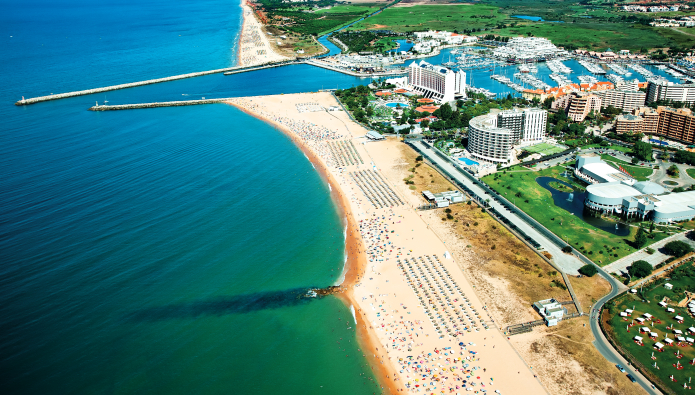
At present, Jenner says there are multiple projects being worked on, including residential homes at Central and Uptown Vilamoura.
But he admits the Portuguese planning system is very slow, which means everything takes time when it comes to getting planning permission and projects to the construction stage. This probably helps to explain why a project which was first started in the late 1960s still has one-third of its development to go.
What is the Vilamoura masterplan?
It’s hard to believe now, but in the 60s one of the most luxurious parts of the Algarve – and one of the three corners of the famous Golden Triangle - was a humble farm, with the resort as we know it today developed around this and a small harbour, which was flanked by sandy beaches and close to the Roman ruins of Cerro da Vila.
It was Portuguese banker Cupertino de Miranda who founded the resort, with a masterplan that consisted of a huge one million square metres (around 1,700 hectares of land). It’s now one of the largest single tourist complexes in Europe, but early on - and through the 70s and 80s - banks financed everything without much of a plan, which left Vilamoura in a bit of a mess.
It was André Jordan – often known as the godfather of resorts in Portugal – who really put together the vision for the modern Vilamoura and brought it into the public’s consciousness, backed by a big marketing budget.
In 1998, Jordan decided to take on a new challenge, and perhaps his biggest: the rehabilitation of Vilamoura.
According to the André Jordan Group website, it was ‘a task that, due to the dimension of the resort and the degraded state of the constructed units and infrastructures, demanded all the resources of his experience and vision on the real estate business’.
By the late 90s, the resort was in very bad shape – devalued and with a poor image. It demanded an urgent revamp.
Jordan and his team in charge of the resort’s management company – Lusotur - set about their work, with the recovery of the oldest area in the resort, the elaboration and approval of the Vilamoura XXI Project, with ‘nine tourist and habitation development clusters’, the construction of nine golf courses (and the rehabilitation of the old ones), and the creation of a calendar of events to attract people to the resort.
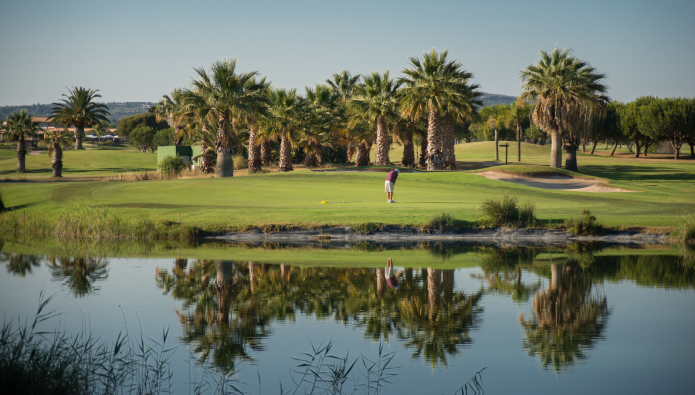
The executive group of Lusotur, chaired by André Jordan, with the board members Carlos Rocha, Vasco Branco, Gilberto Jordan, Luís Correia da Silva and Constantino Jordan, ultimately achieved its goals of transforming the resort and making it viable and highly attractive to outside investors. Jordan had been the catalyst in turning Vilamoura’s fortunes around and the resort was sold to a Spanish group in 2005.
In March 2015, the development was purchased by US company Lone Star and Vilamoura World was formed to continue the masterplan. It has tried since then to expand on what the resort already had in place, but in a sustainable, small-scale, environmentally-friendly way.
What makes Vilamoura different?
One criticism levelled at locations in the Golden Triangle, for all their plushness, manicured greenery and sense of luxury, is a lack of character or soul. They are viewed as a little too perfect, elitist and exclusive.
Jenner, however, doesn’t believe this criticism can be aimed at Vilamoura, which he says is a town in its own right these days, with 11,000 permanent residents on top of all the tourists who would typically descend on the place in normal times. It has a Roman museum, a tennis club, an international school, retail offerings, restaurants, health centres and an environmental park.
The legacy of some of the bad planning can be seen in a disused casino and some buildings which have seen better days – almost Brutalist in their design, and very much functional over aesthetically pleasing – but in the main the residential parts of Vilamoura are very high-end and bespoke.
The busy, grittier working town of Quarteira – a popular tourist destination in the summer, but more like an out-of-season British seaside town in the winter months – is close by and provides quite a nice contrast with the more pristine aesthetic of Vilamoura.
For Jenner, there are a number of reasons why people would be drawn to this part of the world.
“There are world-class beaches, golf, tennis, a great climate, good food, and tax incentives like the NHR scheme.”
But he makes it clear that Brexit has complicated things and made it much more difficult for Brits to reside or retire in Portugal without taking advantage of something like the Golden Visa (which is certainly not an option for everyone).
“The 90 days in 180-day period [the new regulation for UK citizens when travelling to the EU] is the total opposite to freedom,” he states.
While there has been no concrete information about the end of the Golden Visa scheme for certain parts of Portugal from July 2021, there is a good chance that resorts like Vilamoura could be disallowed under the new rules, with the Algarve expected to be excluded from the scheme from July onwards.
“There is a short window for investors in the Algarve to take advantage before the scheme potentially closes,” he says. “You can get five years of residency and access to the Schengen Zone, plus at the end of the five years you can apply for Portuguese nationality while still keeping your British passport.”
Why is Vilamoura ideal for a post-Covid world?
Much of Vilamoura and its surrounding areas is low-dense – making it perfect for a post-Covid world. The masterplan controls this, ensuring high-density housing, retail and hotels don’t become a problem like they have in other tourist-friendly parts of Portugal.
Fast broadband has also become a must-have for many since the start of the work from home boom, and Vilamoura World aims to cater for this demand by having a Laser Telecom package pre-installed in every home, offering fast internet and an extensive TV package with everything from German lower-league football to the latest British TV shows. There are 200 HD channels on offer and it’s provided for free for one year for buyers.
The move towards remote work has also had an influence on the age demographics of those investing in the area.
“It was previously older, but it’s 40-50 now. City people. And it’s a destination with different nationalities,” Jenner says. “There were 21 different nationalities last year from a sales point of view.”
There are an increasing number of people with kids, who don’t want or need to stay in the office anymore. With 900 kids at the local international school, and a waiting list, it’s clear that demand is high from overseas investors. For the British market, the school enables kids to study GCSEs and A-levels just as they would in the UK.
What is the future of Vilamoura?
Sustainability is the biggest consideration, according to Jenner. “Loule [the local council] demands it. For the buyers of the next generation – the millennials – sustainability and the environment are a big deal, so it makes sense to do it.”
The company has been experimenting with cross-laminate timber construction and the Passivhaus style of housebuilding – which aims for zero-energy homes where the climate is controlled year-round, the home is fully sound-proof and insulated, and where the air cleans itself.
There is the 170-hectare environmental park nearby, as well as 45 hectares of green areas, five golf courses, and the 25-hectare equestrian facility which holds international events.
There are challenges ahead for the resort, too, not just with Covid and Brexit, but also access.
“Getting to Faro, point to point, is difficult for some markets,” Jenner admits. “Scandinavia to Faro, for example, is difficult, requiring an extra three hours through Lisbon.”
Despite this, the resort appeals to a huge number of markets, including homegrown Portuguese, British and Irish, those from Central Europe, Italy and Benelux, and growing numbers of buyers from South Africa, China and Russia. There’s also an emerging market from Canada and the US, typically from expat Portuguese who emigrated to Canada and the US and now want a base in their home country.
He warns buyers to do their research on Portugal – making sure they are hot on all the legal and tax requirements. He also says the penny has to drop for people that you can’t retire abroad like before, with it now being more complicated to get residency.
Business is down at the moment, for obvious reasons. However, last year, after lockdown, the company was selling five units in a week, when it would normally be two to three units a month.
“The majority of the market is actually Portuguese,” Jenner says. “A decade ago, it would have been British and Irish. The financial crash changed this, and then Brexit. The pound got murdered and hasn’t fully recovered since.”
That said, British and Irish demand still remains high and one of the main markets, even despite this. According to the Association of Portuguese Resorts (APR), there has been a recent surge in interest in the Algarve from discerning Brits and the Irish, with 22% of international enquiries between September and December 2020 from those interested in buying resort homes in Portugal hailing from the UK and Ireland.
“We always suspected that Brexit would act as a trigger for many people in the UK to reassess where they want to live and what they want from their lifestyle. With the impact of Covid overlaying that, life in Portugal has even more appeal to many families. This has led to a surge in interest from those looking for something more than they currently have,” Pedro Fontainhas, managing director of APR, said.
The APR’s findings also revealed insights into the priorities of potential buyers. It found, across all markets, that the main reason for enquiring was in relation to a primary residence, with this accounting for 43% of leads. While many (31%) were interested in holiday homes in Portugal, it was a desire for a more fundamental change of location and lifestyle that was behind the majority of enquiries.
Drilling down into the December data, we can see that, from within the UK, 36% of enquiries came from people living in London. Such findings are backed by a September 2020 survey from Adecco and YouGov, which found that 40% of Londoners would be open to leaving the UK and working elsewhere in Europe.
Ultimately, Jenner thinks areas and resorts like Vilamoura will always have appeal to buyers.
“Some like authentic Portugal, others prefer a manicured resort and want everything there,” he says.
Vilamoura certainly offers that, and a closeness to Faro Aiport which makes it accessible to many markets.
What’s on offer?
Vilamoura World has a range of touristic, hotel, retail and residential plots, with a development landbank that has a total buildable area of 569,000 square metres. Its offering includes a range of land plots ready for development and master-planned to complement existing amenities, as well as unique turnkey residential units for sale.
For its residential accommodation, Vilamoura World says it ensures that all properties deliver the ‘contemporary amenities that buyers of premium residences expect’, such as free 1GB broadband for the first year and access to the estate’s new business centre. Communal facilities vary between developments, including features such as landscaped gardens and outdoor pools.
Central Vilamoura
A luxury gated condominium of 41 homes in the centre of Vilamoura, just a five-minute walk from the marina and beaches.
The homes are available in four, three and two-bedroom layouts, with the two-bedroom layout featuring living rooms with double-height windows and gallery.
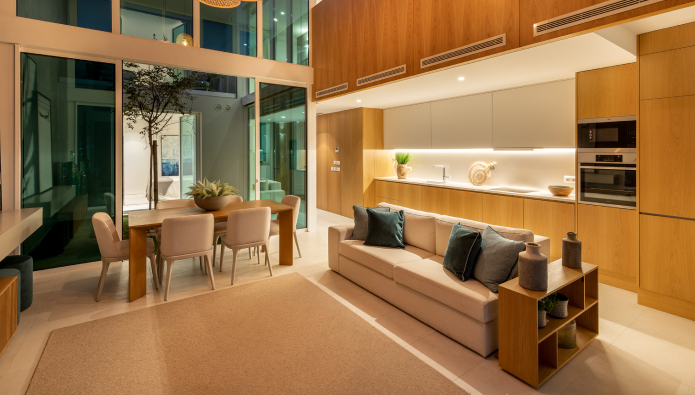
Two-bedroom townhouses start from €640,000.
You can see a 360 degrees tour here and a video of the development here.
Uptown Vilamoura
Located near Vilamoura’s west entrance, adjacent to the Victoria Golf Course, home of the Portugal Masters.
The 31 individual homes and apartments at Uptown Vilamoura are close to completion.
Uptown’s architecture ‘has typical Portuguese flair and integrates perfectly into the landscape, using materials and solutions that adapt to the climate and to how the home is used’.
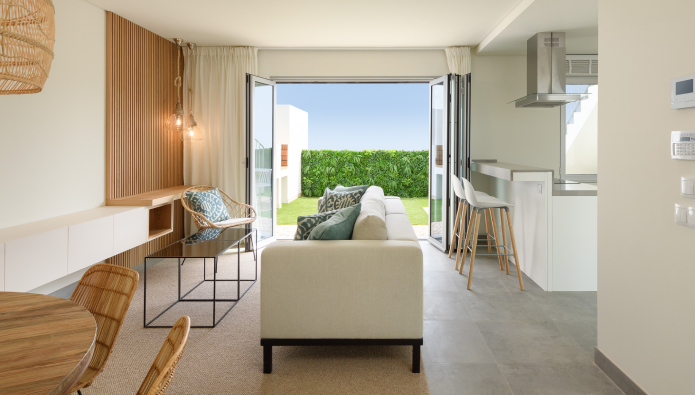
The first phase of Uptown includes both apartments and villas consisting of two and three bedrooms. A two-bedroom villa is available from €399,000.
You can see the tour here and a video here.
*Images courtesy of Shutterstock and Vilamoura World



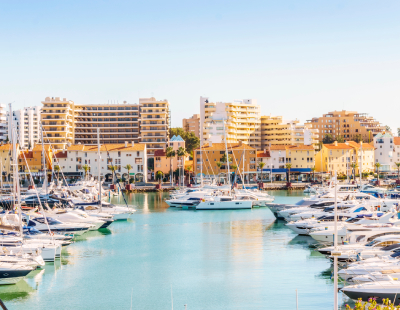




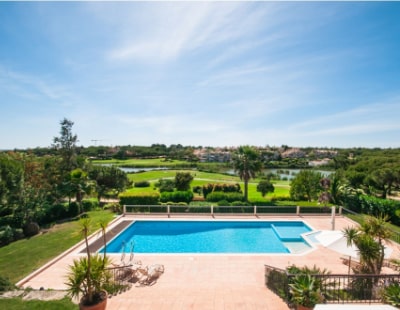


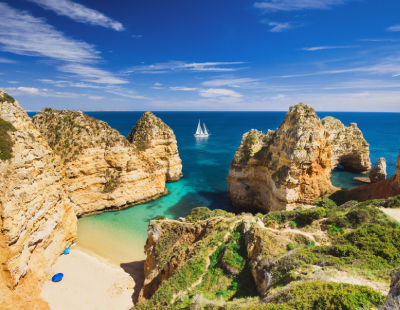

.png)

.jpg)








Join the conversation
Be the first to comment (please use the comment box below)
Please login to comment